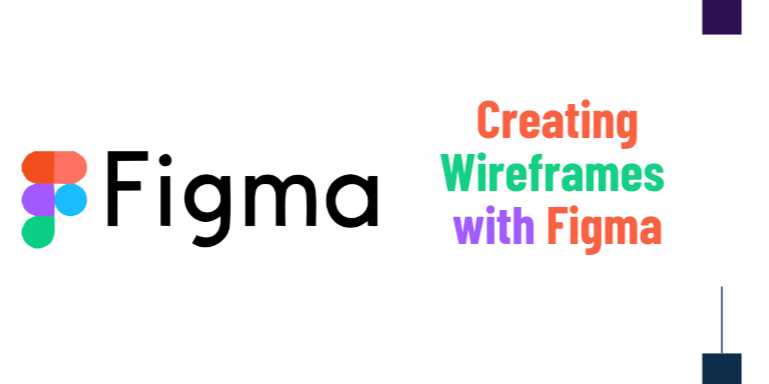Chapters
Mastering Wireframes with Figma: A Beginner’s Guide to Seamless UI/UX Planning

📘 Chapter 1: Introduction to Wireframing and the Role of Figma
🔹 What is Wireframing?
Wireframing is the foundational step in the UI/UX design
process. It’s like creating the architectural blueprint before constructing a
building. A wireframe is a low-fidelity, simplified visual representation of a
digital product’s layout and structure. It primarily focuses on:
- Placement
of elements (navigation, content, CTAs)
- User
flows and interaction logic
- Information
architecture
Wireframes are intentionally devoid of visual styling, color
schemes, or real images to ensure that the focus remains purely on layout and
usability.
🔹 Why Wireframing is
Crucial in UI/UX Design
Wireframing helps bridge the gap between idea and execution.
Here’s why it’s a non-negotiable step in modern product design:
- Clarifies
functionality early in the process
- Saves
time and cost by detecting flaws before high-fidelity design or
development
- Improves
communication between designers, developers, and stakeholders
- Enables
user testing and feedback loops with minimal investment
- Builds
a foundation for visual design and prototyping
In short, it ensures your digital product is user-centric,
usable, and aligned with business goals.
🔹 Types of Wireframes
|
Type |
Description |
Fidelity Level |
|
Low-Fidelity |
Rough sketches or
grayscale digital mockups |
Low |
|
Mid-Fidelity |
More detailed
with labeled sections, basic UI components |
Medium |
|
High-Fidelity |
Close to the final
product, may include actual content |
High |
For most Figma wireframing, low-to-mid fidelity is
sufficient to plan and validate layout structure.
🔹 Common Elements in a
Wireframe
|
Element |
Purpose |
|
Headers |
Navigation and brand
identity |
|
Buttons |
Call-to-action
placements |
|
Content blocks |
Text, images, and
media placeholders |
|
Forms |
Data input
areas for users |
|
Navigation menus |
Enables movement
across pages |
|
Icons/Placeholders |
Represent
interactive components (e.g., sliders) |
🔹 Evolution of
Wireframing Tools
Traditionally, wireframes were created using:
- Paper
sketches
- Microsoft
PowerPoint
- Adobe
Illustrator or Photoshop
But modern tools like Figma, Sketch, Adobe
XD, and Balsamiq have taken over because they offer:
- Component
reuse
- Live
collaboration
- Device-specific
design
- Instant
feedback systems
Among these, Figma stands out as a cloud-native platform
that redefines collaboration and ease-of-use.
🔹 Introduction to Figma
Figma is a free, web-based interface design tool with robust
capabilities for wireframing, prototyping, and UI design. It's especially loved
for its:
- Cross-platform
availability
- Cloud
collaboration
- Plugin
ecosystem
- Smooth
hand-off to developers
Figma enables designers, developers, marketers, and clients
to work together in real-time—no need to save files, sync folders, or email
drafts.
🔹 Benefits of Using Figma
for Wireframing
Here’s a breakdown of why Figma is preferred for
wireframing:
|
Feature |
Advantage |
|
Web-based &
Lightweight |
Access anywhere,
anytime, without software installation |
|
Real-time Collaboration |
Multiple users
can edit or comment simultaneously |
|
Templates & UI
Kits |
Speeds up design
process |
|
Smart Components |
Create
reusable blocks for consistent design |
|
Version Control |
View history and
restore older versions |
|
Export & Dev Tools |
Developers
can inspect elements, copy CSS, and download assets |
🔹 Key Figma Tools for
Wireframing
- Frame
Tool (F): Define device or screen boundaries
- Shape
Tools (R, O, etc.): Draw rectangles, circles, and lines for structure
- Text
Tool (T): Insert labels and placeholder content
- Components:
Reusable design elements like buttons and cards
- Grids/Layouts:
Align content with pixel-perfect precision
- Plugins:
Add-ons like Content Reel, Wireframe kits, etc.
🔹 Step-by-Step: Starting
a Wireframe in Figma
1. Create a New Project/File
- Open
figma.com, click “+ New
Design File”
- Name
it based on your project or screen
2. Select Your Frame Size
- Use
the Frame tool and pick a device preset (e.g., Desktop, iPhone, iPad)
3. Add Layout Grids
- Enable
grid from the right-hand panel
- Choose
columns (for responsive design), rows, or baseline grids
4. Place Structural Elements
- Add
rectangles for headers, text blocks, image placeholders
- Keep
it grayscale, using borders and shades of gray only
5. Create and Use Components
- For
repetitive UI like buttons or cards
- Update
once to reflect across all screens
6. Add Comments for Context
- Use
the Comment mode to add notes for developers or collaborators
🔹 When to Use Wireframes
in the Design Process
Wireframing is most effective during the early phases
of the design cycle:
|
Design Stage |
Wireframing Use |
|
Ideation |
Sketch out potential
user flows and screen layout |
|
UX Design |
Focus on user
journeys and interaction patterns |
|
Prototyping |
Use wireframes as a
base for adding interactivity |
|
Usability Testing |
Validate
layout and navigation before adding visuals |
Wireframes are living documents—they evolve alongside the
project and can serve as internal documentation.
🔹 Collaboration in Figma:
A Game-Changer for Teams
One of Figma’s strongest features is multi-user
collaboration.
- Designers
and developers can work in the same file
- Stakeholders
can comment directly on design elements
- Real-time
changes prevent the need for endless email chains or Slack threads
- Version
history tracks every change, so there’s no risk of overwriting
🔹 Limitations of
Wireframing and How Figma Minimizes Them
|
Common Limitation |
How Figma Helps |
|
Lack of
interactivity |
Use Figma's Prototype
tab to simulate user flow |
|
Miscommunication with devs |
Inspect mode
provides CSS, dimensions, and assets |
|
Poor version
control |
Figma tracks all
versions automatically |
|
Repetition of elements |
Components
allow updates to be reflected across all pages |
🔹 Summary
Wireframing isn’t just sketching boxes—it’s the strategic
foundation of your digital product. It defines structure, clarifies
functionality, and ensures alignment between design and user needs. With Figma,
wireframing becomes faster, smarter, and truly collaborative.
By integrating powerful features like real-time editing,
reusable components, and developer-friendly inspection tools, Figma doesn’t
just support wireframing—it elevates it. Whether you're working solo or as part
of a large cross-functional team, Figma is an essential tool for turning ideas
into impactful interfaces.
So, as you begin your wireframing journey, let Figma be your
canvas—where raw concepts transform into meaningful experiences.
FAQs
1. What is wireframing and why is it important in UI/UX design?
Wireframing is the process of creating a low-fidelity blueprint of a digital interface to outline layout, content structure, and functionality before visual design begins. It helps streamline development and ensures clarity across teams.
2. Is Figma suitable for beginners who want to create wireframes?
Yes, Figma is very beginner-friendly due to its intuitive interface, drag-and-drop components, and a wide range of templates and plugins tailored for wireframing.
3. What’s the difference between wireframes and prototypes in Figma?
Wireframes are static layouts used to plan structure, while prototypes include interactive elements that simulate user flow and behavior. Figma supports both in the same design environment.
4. Do I need to know how to code to create wireframes in Figma?
No coding knowledge is required. Figma is a visual design tool that allows you to build wireframes using shapes, text, and pre-built components.
5. Can I collaborate with my team in real-time while wireframing in Figma?
Absolutely. Figma is cloud-based and enables real-time collaboration, commenting, and version control, making it ideal for remote teams.
6. What screen sizes or layouts should I use when starting a wireframe?
Figma provides presets for common devices such as desktop, tablet, and mobile screens. You can also create custom sizes based on your project requirements.
7. How do components help in wireframing with Figma?
Components are reusable design elements. When you update a main component, all instances reflect the change—saving time and maintaining consistency.
8. What are some good Figma plugins for wireframing?
Useful plugins include Wireframe.cc Kit, Content Reel, Iconify, and Lorem Ipsum Generator, which enhance productivity and speed up the wireframing process.
9. Can I turn my wireframes into interactive prototypes within Figma?
Yes, Figma allows you to add links, transitions, and interactions to your wireframes to test user flows directly within the same file.
10. Is it better to use grayscale or colors in wireframes?
Grayscale is preferred for wireframes as it keeps the focus on structure and flow rather than visual aesthetics or branding.
Tutorials are for educational purposes only, with no guarantees of comprehensiveness or error-free content; TuteeHUB disclaims liability for outcomes from reliance on the materials, recommending verification with official sources for critical applications.
soumya 2 months ago
Nice info.Jenani 3 months ago
Geeta parmar 4 months ago
Good Info.hend 6 months ago
Good insightsExplore Other Libraries
Related Searches
Please allow ads on our site
Kindly log in to use this feature. We’ll take you to the login page automatically.
Login
Join Our Community Today
Ready to take your education and career to the next level? Register today and join our growing community of learners and professionals.

Your experience on this site will be improved by allowing cookies. Read Cookie Policy
Your experience on this site will be improved by allowing cookies. Read Cookie Policy
Comments(4)